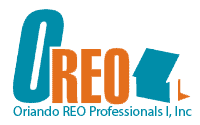Purchasing or investing in REO properties can be a fantastic idea if you do it right. This is part 2 of a 2-part guide to buying a bank-owned home. Check our blog for an introduction and initial REO home buying steps in part 1!
Step 3: Get Pre-Approval from A Lender
When you find a property with all or most of your preferences, contact the lender and talk to them about your financing options. Again, lenders may be eager to offload their inventory, so you have a better chance of approval if all your financial documents are in order. Remember that getting pre-approved will make the rest of the home buying process go much more smoothly.
Step 4: Get an Appraisal
One of the reasons homeowners and investors hesitate with buying REO properties is that they often require plenty of renovations, or they are not in an ideal location. Before you can move forward with the REO buying process, you need to get a professional appraisal to determine the property’s actual value.
A licensed appraiser will go on-site and check the state of the property, its location, and its overall condition. They will also look into the prices of similar properties in the area for comparison.
Step 5: Make an Offer
The right real estate agent will help you put together an offer that the lender will likely accept. This amount should balance the list price, the professional appraisal, and actual market value. Make sure to include inspection contingencies so you can back out of your offer if the home inspection reveals significant property defects.
Step 6: Schedule an Inspection
A home inspection is a deep dive into the current condition of the property. It is especially crucial for REO homes because they often sit vacant for several months, or previous owners may have left it damaged or in disarray. A thorough home inspection will reveal all the needed repairs and renovations along with a rough estimation of these costs.
Step 7: Negotiate and Finalize Your Loan
Once you have all the pertinent details regarding the true cost of the REO property, you can negotiate a final closing price with your lender. This is a more complicated process than dealing with a regular seller because of the innate bureaucracy of banks and mortgage companies.
Your real estate agent is crucial during negotiation—they will have your interests in mind as they go back and forth with your lender.
Step 8: Close the Property
As you negotiate and finalize your loan, it’s important to make sure that the property title is clear and that there are no lingering tax or documentation issues attached to the property.
Once all documents are signed, and payments are complete, you will get the keys to your new home!
Conclusion
Real estate-owned properties are usually listed at market value, so there is significant potential for savings if you’re a potential homeowner, or profit if you’re a potential investor. However, before buying an REO home, you need to do your due diligence regarding the property and consult with REO specialists to ensure a smooth buying process.
This is part 2 of a two-part guide to buying an REO home, so make sure to check our blog for part 1!
If you want to buy REO bank-owned properties in Florida, Orlando REO Professionals I, Inc is here to help. Our REO specialists have accumulated decades of knowledge and experience, and we can help you find the best listing for your investment and ownership needs. Contact our experts today!

